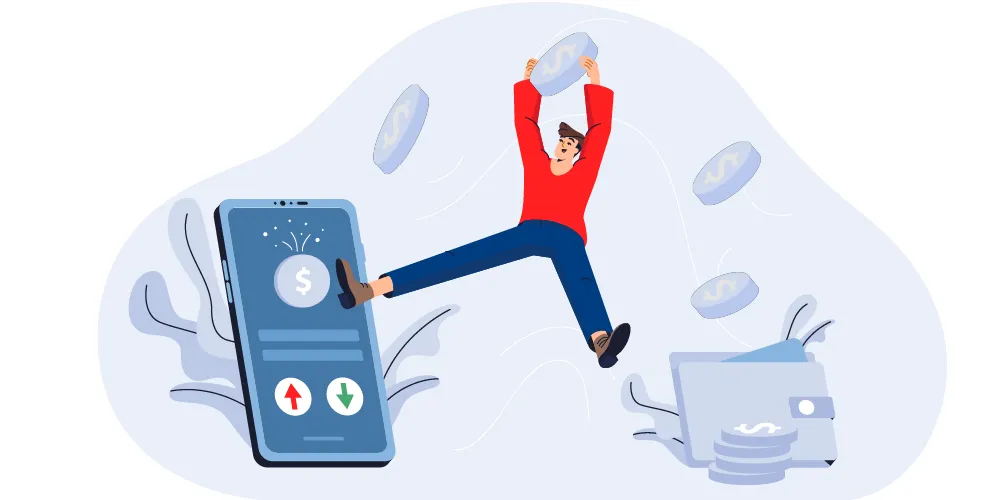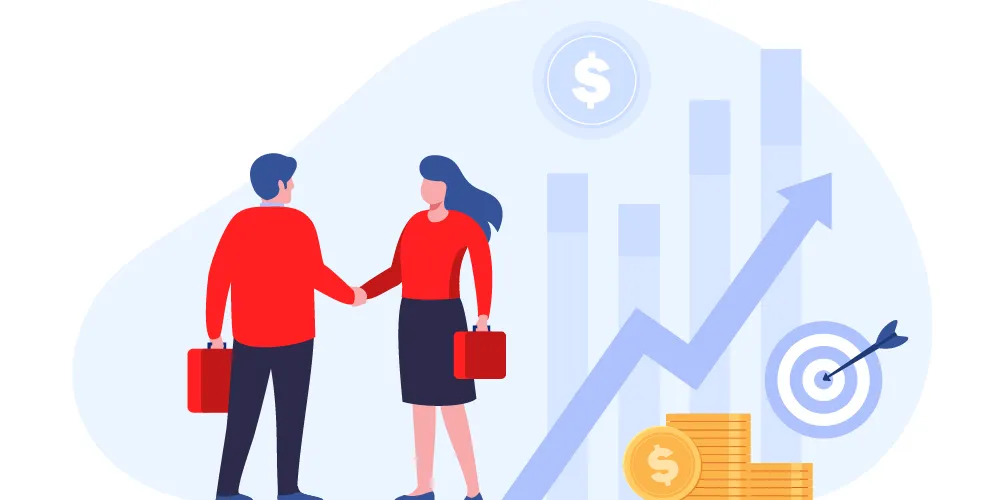The sales cycle is a step-by-step process that sales teams follow to convert leads into customers. It typically includes prospecting, engagement, closing, and follow-up. Understanding the sales cycle helps businesses identify bottlenecks, forecast revenue more accurately, and improve efficiency at every stage of the customer acquisition journey.
Understanding the Sales Cycle: A Comprehensive Guide
- Sumeet Shah
- Apr 08, 2025
- 4 min read
- Last updated on Apr 23, 2025
Introduction to the Sales Cycle
In the complex world of sales, the sales cycle often serves as a blueprint for effective selling strategies. A sales cycle is a series of predictable phases that sales teams traverse to convert prospects into loyal clients. Recognizing and understanding each step of the sales cycle is crucial; it not only simplifies the sales process but also enhances the chances of success. As any diligent salesperson will confirm, mastery of the sales cycle lays the foundation for achieving consistent and remarkable results.
Stages of the Sales Cycle
The typical sales cycle consists of several key stages that define the journey from initial contact with a potential client to closing the sale and nurturing the relationship after purchase.
- Prospecting: This is where the hunt begins. Sales teams identify potential leads through various methods such as networking events, online marketing, or referrals. The aim is to build a pool of potential clients who might benefit from the product or service offered.
- Lead Qualification: Once prospects are identified, the next step is to qualify them by determining their interest level, buying power, and suitability. Effective qualification saves valuable time and resources, ensuring focus on prospects who are most likely to convert.
- Offering Solutions: This stage involves understanding the prospect’s needs and presenting tailored solutions that meet their needs. It's where sales reps align the benefits of their product or service with the client's specific challenges.
- Closing the Deal: After presenting a compelling solution, the next step is persuading the client to make a purchase decision. This may involve negotiation and addressing any lingering objections the prospect may have.
- After-Sales Follow-Up: Successful selling doesn’t end with closing the sale. Following up with clients to ensure satisfaction and address any further needs fosters a long-term relationship and increases the potential for repeat business and referrals.
Importance of Each Stage
Each stage in the sales cycle is a building block that contributes to the success of the sales process. Skipping or neglecting a stage can disrupt the entire cycle, leading to missed opportunities and dissatisfied customers. For instance, inadequate prospecting could mean a smaller pool of leads, while poor after-sales service could result in lost business. Thus, ensuring each stage receives the necessary attention is vital in maintaining a well-oiled sales operation.
How to Measure Sales Cycle Effectiveness
Evaluating the effectiveness of a sales cycle can help pinpoint areas for improvement. Key metrics include conversion rates, average deal size, and the length of the sales cycle. Tracking these indicators provides insights into which strategies are working and highlights where adjustments may be needed. Analytical tools and CRM software often play a crucial role in automating this assessment, generating timely and actionable insights.
Common Challenges in the Sales Cycle
Various hurdles may arise across different stages of the sales cycle. In the prospecting stage, reaching the right audience can be challenging. During lead qualification, distinguishing high-potential leads from low-interest ones requires keen insight. Offering solutions requires a deep understanding of client needs, while closing the deal involves overcoming objections. After-sales follow-up presents the challenge of maintaining client interest. Solutions include leveraging data analytics for better prospecting, continuous training for skill enhancement, and harnessing technology to monitor client interactions efficiently.
Optimizing the Sales Cycle
To optimize the sales cycle for better outcomes, leveraging automation and technology is key. Implementing a robust CRM system can streamline processes, maintain organized records, and enable personalized communication tailored to each customer's specific needs. Additionally, regular training for sales representatives on new tools and customer service techniques ensures they remain equipped to handle evolving market demands. The integration of technology not only aids efficiency but also significantly boosts conversion rates.
Case Studies or Examples
Many businesses have reaped notable successes by meticulously crafting their sales cycles. For example, a tech startup credited its skyrocketing growth to refined prospecting techniques and a robust CRM system, which allowed for precise lead qualification and targeted communication efforts. In another instance, a retail company saw a 30% increase in repeat customers after prioritizing personalized after-sales follow-ups as part of their sales cycle.
Conclusion
In conclusion, mastering the sales cycle is pivotal for consistent sales success. Each stage plays a crucial role in the process, and continuous evaluation and optimization are necessary to address challenges and leverage opportunities. By understanding and refining each phase of the sales cycle, businesses can improve their sales outcomes, ensuring sustained growth and customer satisfaction.
Frequently Asked Questions
What is the sales cycle, and why is it important?
What are the main stages of a typical sales cycle?
The typical sales cycle includes seven stages: prospecting, qualifying leads, needs analysis, presentation, handling objections, closing the deal, and follow-up. While stages may vary by industry or organization, these core steps help teams structure their approach, measure progress, and ensure consistent customer interactions throughout.
How long does a sales cycle usually take?
The sales cycle length varies depending on the industry, product complexity, and the number of decision-makers involved. In B2B environments, cycles can range from a few weeks to several months. Shorter cycles are common in transactional sales, while enterprise deals often require longer timelines due to higher stakes and multiple approval layers.
How can businesses improve their sales cycle efficiency?
To improve efficiency, businesses can automate repetitive tasks, qualify leads more accurately, use CRM tools for tracking, and provide ongoing sales training. Analyzing past sales data also helps identify which stages need optimization. The goal is to reduce friction, accelerate conversions, and create a smoother buyer journey.





